
Lucinidae, common name hatchet shells, is a family of saltwater clams, marine bivalve molluscs.

Tucetona pectinata, or the comb bittersweet, is a species of bivalve mollusc in the family Glycymerididae.
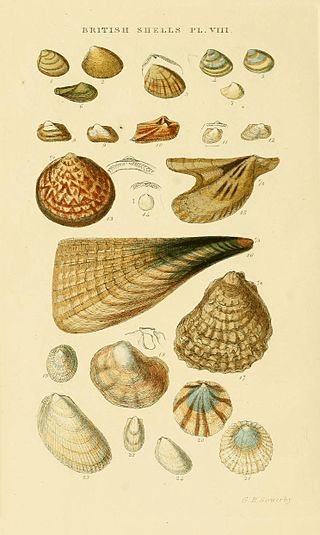
Limaria pellucida, the Antillean file shell, is a species of bivalve mollusc in the family Limidae. It can be found along the Atlantic coast of North America, ranging from North Carolina to the West Indies.
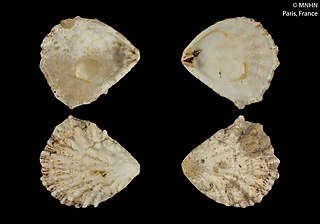
Plicatula gibbosa, commonly known as the Atlantic kitten's paw, is a species of bivalve mollusc in the family Plicatulidae.
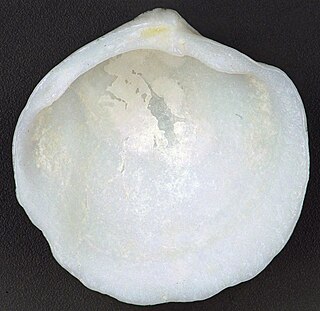
Lucina pensylvanica, commonly known as the Pennsylvania lucine, is a species of bivalve mollusc in the family Lucinidae.
Pleurolucina leucocyma, or the saw-toothed pen shell, is a species of bivalve mollusc in the subfamily Lucininae of the family Lucinidae.
Anodontia philippiana, or the chalky buttercup, is a species of bivalve mollusc in the family Lucinidae. It can be found burrowing in soft substrate in shallow waters along the Atlantic coast of North America, its range extending from North Carolina in the United States to the West Indies and Bermuda.
Clathrolucina costata, or the costate lucine, is a species of bivalve mollusc in the family Lucinidae. It can be found along the Atlantic coast of North America, ranging from North Carolina to the West Indies.

Periglypta is a genus of bivalves in the subfamily Venerinae of the family Veneridae.
Pitarenus cordatus, or the cordate venus clam, is a species of bivalve mollusc in the family Veneridae. It can be found throughout the Gulf of Mexico and the Florida Keys.

Hysteroconcha dione or the elegant Venus clam, formerly known as Venus dione, is a species of bivalve mollusc in the family Veneridae, the Venus clams.

Agriopoma morrhuanum, or the false quahog, is a species of bivalve mollusc in the family Veneridae.
Stewartia floridana is a bivalve of the family Lucinidae that is chemosymbiotic with sulfur-oxidizing bacteria.

Lucina is a genus of saltwater clams, marine bivalve molluscs.

Radiolucina is a genus of bivalves belonging to the family Lucinidae.
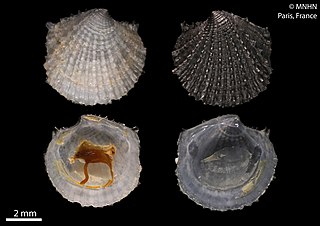
Lucinisca is a genus of saltwater clams, marine bivalve molluscs in the subfamily Lucininae of the family Lucinidae.

Pleurolucina is a genus of saltwater clams, marine bivalve molluscs in the subfamily Lucininae of the family Lucinidae.

Lucinoma is a genus of saltwater clams, marine bivalve molluscs in the subfamily Codakiinae of the family Lucinidae.
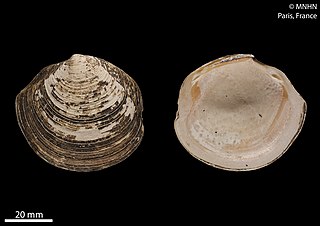
Phacoides is a genus of bivalves belonging to the family Lucinidae.

Panopea bitruncata is a species of marine bivalve commonly known as the Atlantic geoduck or Atlantic geoduck clam. These clams like their more famous Pacific relative P. generosa have an enlarged siphon that can extend to great lengths or contract to just barely poke out of the shell. They are generally smaller in comparison to the Pacific species though still constitute a sizable mollusc as they cannot fully retract their siphon.















